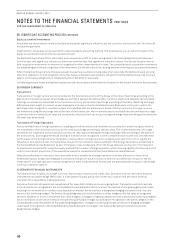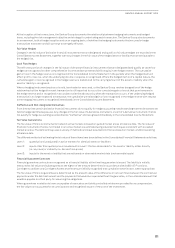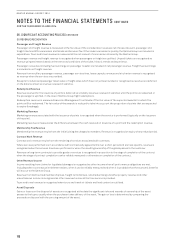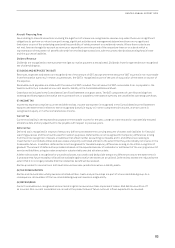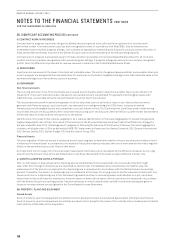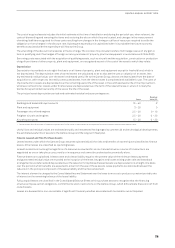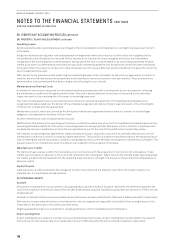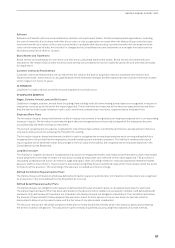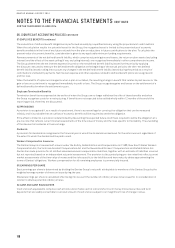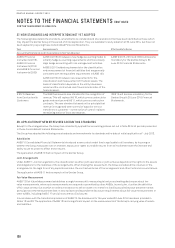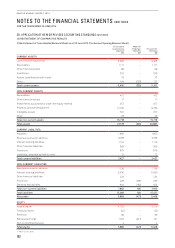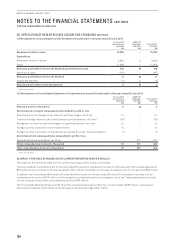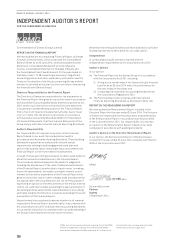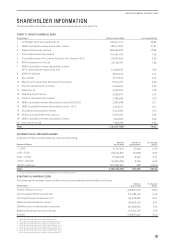Qantas 2014 Annual Report Download - page 122
Download and view the complete annual report
Please find page 122 of the 2014 Qantas annual report below. You can navigate through the pages in the report by either clicking on the pages listed below, or by using the keyword search tool below to find specific information within the annual report.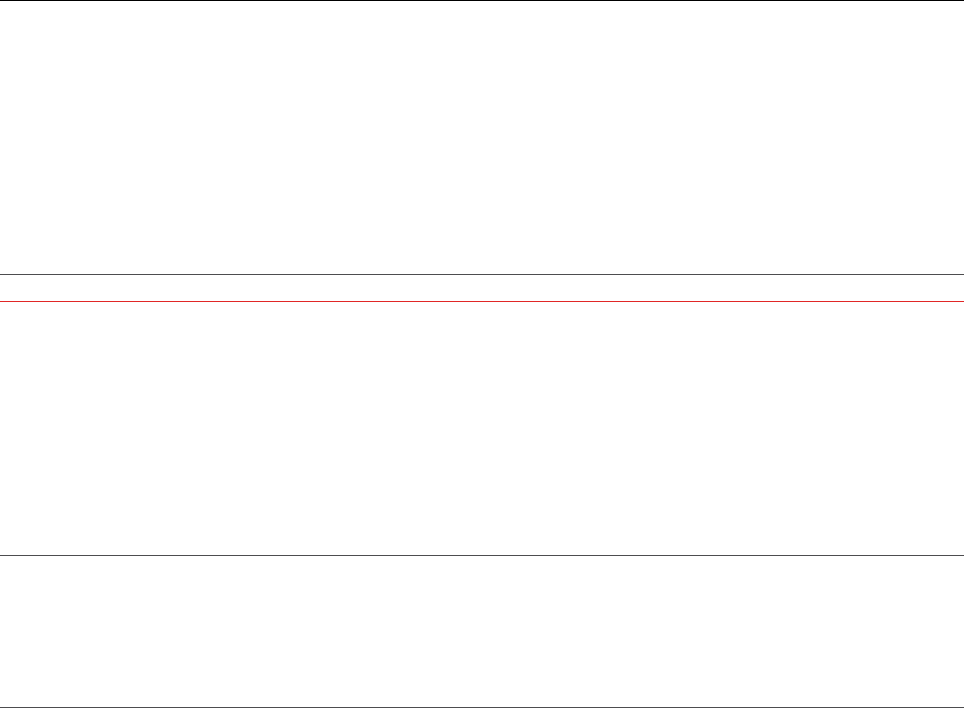
120
QANTAS ANNUAL REPORT 2014
NOTES TO THE FINANCIAL STATEMENTS CONTINUED
FOR THE YEAR ENDED 30 JUNE 2014
37. NEW STANDARDS AND INTERPRETATIONS NOT YET ADOPTED
The following table details the standards, amendments to standards and interpretations that have been identified as those which
may impact the Qantas Group in the period of initial application. They are available for early adoption at 30 June 2014, but have not
been applied in preparing these Consolidated Financial Statements.
Topic Key requirements Effective date for Qantas
Accounting Standards and Interpretations Not Yet Adopted
AASB 9
Financial
instruments
(2013),
AASB 9
Financial
Instruments
(2010)
and AASB 9
Financial
Instruments
(2009)
AASB 9 (2013) introduces a new hedge accounting model to
simplify hedge accounting requirements and more closely
align hedge accounting with risk management activities.
AASB 9 (2011) added requirements for the classification
and measurement of financial liabilities that are generally
consistent with the equivalent requirements in AASB 139.
AASB 9 (2010) introduces new requirements for the
classification and measurement of financial assets. The
basis of classification depends on the entity’s business
model and the contractual cash flow characteristics of the
financial asset.
AASB 9 (2013, 2010 and 2009) will become
mandatory for the Qantas Group’s 30
June 2019 Financial Statements.
IFRS 15
Revenue
from Contracts with
Customers
The IASB has issued a new standard for the recognition of
revenue. This will replace IAS 18, which covers contracts for
goods and services and IAS 11, which covers construction
contracts. The new standard is based on the principle that
revenue is recognised when control of a good or service
transfers to a customer – so the notion of control replaces
the existing notion of risks and rewards.
IFRS 15 will become mandatory for the
Qantas Group’s 30 June 2019 Financial
Statements.
38. APPLICATION OF NEW OR REVISED ACCOUNTING STANDARDS
Except for the changes below, the Group has consistently applied the accounting policies set out in Note 36 to all periods presented
in these Consolidated Financial Statements.
The Group has adopted the following new standards and amendments to standards with a date of initial application of 1 July 2013.
Subsidiaries
AASB 10
Consolidated Financial Statements
introduced a new control model that is applicable to all investees, by focusing on
whether the Group has power over an investee, exposure or rights to variable returns from its involvement with the investee and
ability to use its power to affect those returns.
The application of AASB 10 had no impact on the Qantas Group.
Joint Arrangements
Under AASB 11
Joint Arrangements
, the classification as either joint operations or joint ventures depends on the rights to the assets
and obligations for the liabilities of the arrangements. When making this assessment, the Group considered the structure of the
arrangements, the legal form of any separate vehicles, the contractual terms of the arrangement and other facts and circumstances.
The application of AASB 11 had no impact on the Qantas Group.
Fair Value Measurement
AASB 13
Fair Value Measurement
establishes a single framework for measuring fair value and making disclosures about fair
value measurements, when such measurements are required or permitted by other AASBs. In particular, it unifies the definition
of fair value as the price at which an orderly transaction to sell an asset or to transfer a liability would take place between market
participants at the measurement date. It also replaces and expands the disclosure requirements about fair value measurements in
other AASBs, including AASB 7
Financial Instruments: Disclosures
.
In accordance with the transitional provisions of AASB 13, the disclosures for the year ended 30 June 2014 have been provided in
Notes 13 and 33. The application of AASB 13 had no significant impact on the measurements of the Group’s carrying value of assets
andliabilities.


